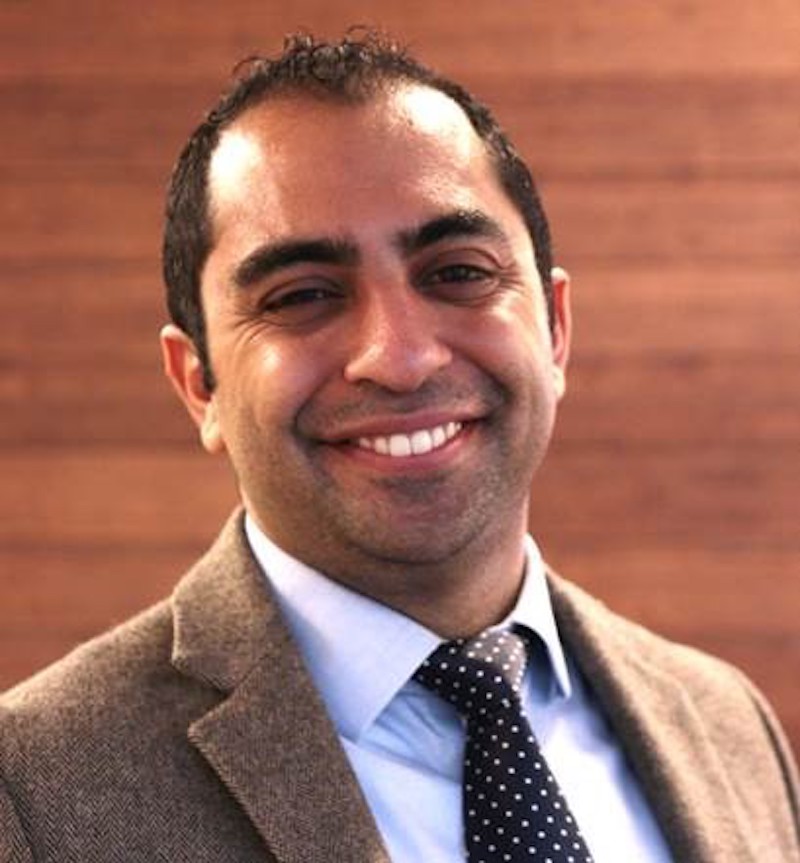HOK, the global design firm whose healthcare practice has planned and designed numerous healthcare facilities, has appointed Andrew M. Ibrahim, a medical doctor whose education included architectural training, as its chief medical officer.
Ibrahim, MD, MSc., is a resident surgeon at the University of Michigan, and serves on AIA’s Design and Health Leadership Group. While at Case Western Reserve University, where he received his undergraduate and medical degrees, Ibrahim took a year of coursework at London’s Bartlett School of Architecture.
He has also received training in healthcare delivery and policy as a Crile Fellow at Princeton University, a Doris Duke Fellow at Johns Hopkins Hospital, and as a Robert Wood Johnson Clinical Scholar at Michigan.
HOK claims to be one of the first AEC firms to hire a chief medical officer. (According to his LinkedIn page, Ibrahim has been HOK’s chief medical officer since February, although the company only released that news yesterday.) “In an era of hospital megamergers and value-based care, Dr. Ibrahim’s expertise in healthcare policy and clinical innovation will be instrumental in helping our teams guide clients through how vertical and horizontal integrations can positively affect patient care,” says Anthony Roesch, AIA, director of HOK’s global Healthcare Consulting group.
Ibrahim will use his expertise in surgery, architecture and clinical care delivery models to collaborate with HOK’s teams of medical planners, designers, and consultants.
“My experience has taught me that everything we build and design—schools, stadiums, airports, skyscrapers—has enormous potential to improve population health and wellness. As such, I deliberately collaborate across a breadth of academic and private sectors,” Ibrahim wrote on the website surgeryredesign.com. where he highlights his academic research and writing.
Related Stories
Architects | Mar 30, 2015
Q+A with Arthur Gensler, and advice from his new book
"Designers need to be trained to solve their clients’ problems through design while leading their own firms to become sustainable practices," says Gensler.
Structural Materials | Mar 30, 2015
12 projects earn structural steel industry's top building award
Calatrava's soaring Innovation Science and Technology Building at Florida Polytechnic University is among the 12 projects honored by the American Institute of Steel Construction in the 2015 IDEAS² awards competition.
Cultural Facilities | Mar 30, 2015
Designs released for new entertainment center in Lubbock, Texas
Amenities of the facility include a performance venue that seats 2,220, a smaller one that seats 425, a 6,000-sf multipurpose room, and a bistro café.
Multifamily Housing | Mar 27, 2015
Bathroom fixtures get a starchitect makeover by Bjarke Ingels
This Danish starchitect elevates the toilet paper holder (and other bathroom accessories).
Architects | Mar 27, 2015
Illustrator Federico Babina explores architecture as animals
When you pay attention, the Eiffel Tower really does look like a giraffe.
Transit Facilities | Mar 25, 2015
Kengo Kuma selected to design new Paris Metro station
The new station will serve as a hub to connect Paris' northern suburbs with the core.
Green | Mar 25, 2015
WELL Building Standard introduced in China
The WELL Building Standard is a performance-based system for measuring, certifying and monitoring features that impact human health and wellbeing, through air, water, nourishment, light, fitness, comfort, and mind.
High-rise Construction | Mar 24, 2015
Timber high-rise residential complex will tower over Stockholm waterfront
The four towers, 20 stories each, will be made entirely out of Swedish pine, from frame to façade.
Higher Education | Mar 23, 2015
Hong Kong university building will feature bioclimatic façade
The project's twin-tower design opens the campus up to the neighboring public green space, while maximizing the use of summer winds for natural ventilation.
Religious Facilities | Mar 23, 2015
Is nothing sacred? Seattle church to become a restaurant and ballroom
A Seattle-based real estate developer plans to convert a historic downtown building, which for more than a century has served as a church sanctuary, into a restaurant with ballroom space.

















